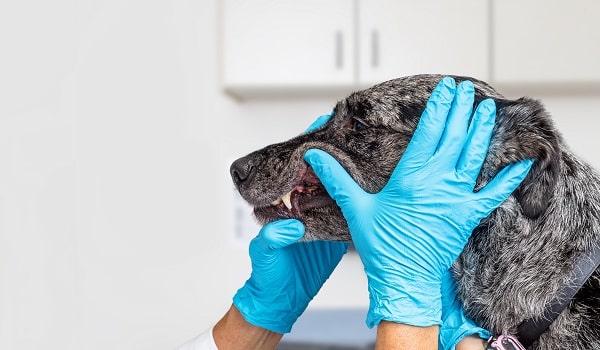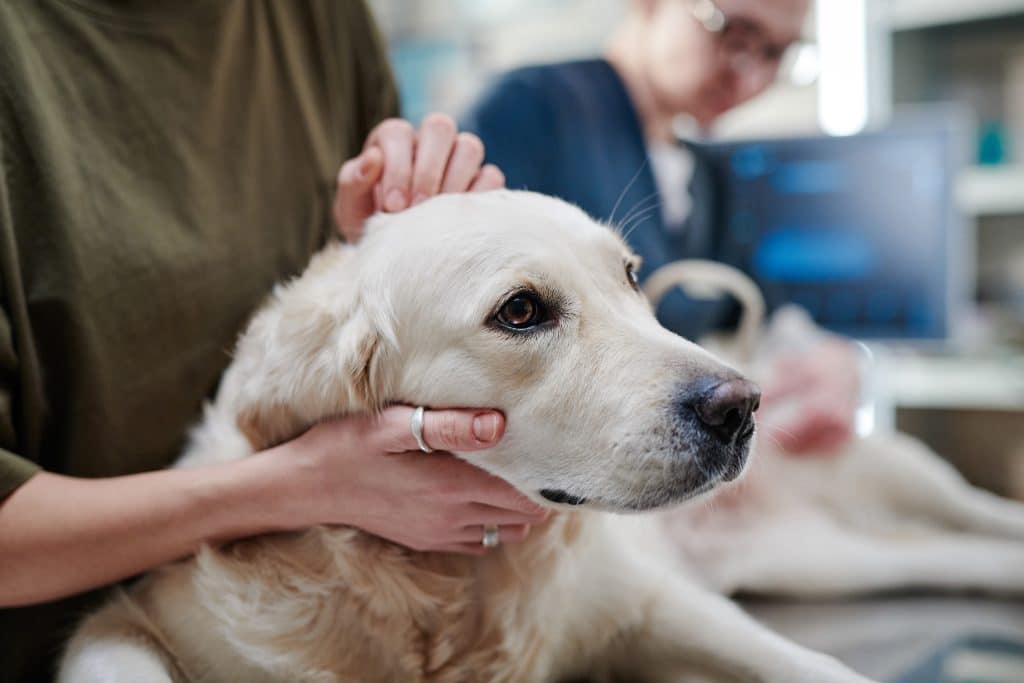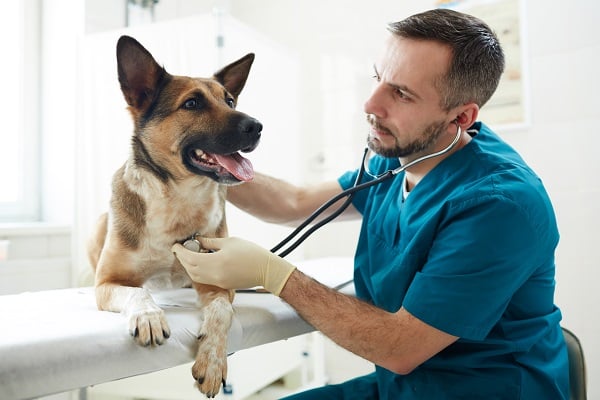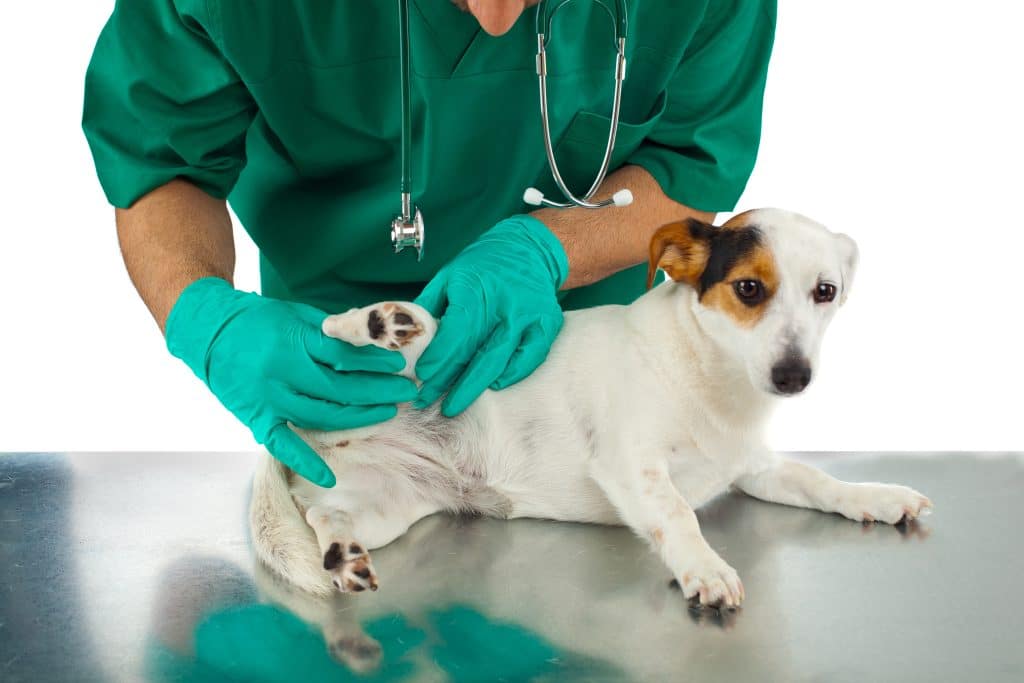Anemia is a medical condition that occurs when a dog’s blood lacks enough healthy red blood cells, which are vital for carrying oxygen to body tissues. Recognizing the warning signs of anemia in your canine companion is crucial, as early detection and treatment can make a significant difference in your dog’s overall health and well-being. That is why this post is here to break down some of these warning signs and how to identify them.
Contents
- 1 Understanding Anemia In Dogs
- 2 Recognizing the Signs of Anemia in Dogs
- 3 Pale Gums
- 4 Lethargy And Weakness
- 5 Unusual Breathing Patterns
- 6 Decreased Appetite And Weight Loss
- 7 Changes In Urine And Feces
- 8 Increased Heart Rate And Heart Murmurs
- 9 Bruising And Bleeding
- 10 Swollen Abdomen
- 11 Be Aware Of The Warning Signs Of Anemia In Dogs!
Understanding Anemia In Dogs

Anemia can be a serious health issue for your furry companion, and it is essential to understand the possible causes. These may range from blood loss to destruction or insufficient production of red blood cells. When left untreated, anemia can lead to severe health complications or even result in death. To ensure your pet’s health and well-being, pay attention to the symptoms of anemia in dogs and take prompt action to obtain necessary medical attention.
Early detection is critical to improving your dog’s prognosis and quality of life. Regular veterinary check-ups can help identify issues before they become serious. Maintaining a healthy lifestyle for your dog can help reduce the risk of anemia and other medical conditions. Remember that knowledge is power; being informed about anemia in dogs can be the key to keeping your pet healthy and happy.
Recognizing the Signs of Anemia in Dogs
In this section, you’ll explore various warning signs of anemia in dogs. And while each symptom may indicate anemia, it’s important to note that some of these signs can also be associated with other medical issues. Always consult with your veterinarian if you notice any changes in your dog’s health or behavior.
Pale Gums

One of the most common and easily noticeable signs of anemia in dogs is pale gums. Healthy dog gums should be a vibrant pink color. However, when a dog is anemic, the gums may appear pale or even white due to the reduced number of red blood cells circulating in the bloodstream. Checking your dog’s gums regularly can help you quickly identify potential problems.
To check this, you can gently lift your dog’s lip and examine the inside of their mouth. If you notice any color changes, make sure to bring it up with your veterinarian. Keep in mind that this is not a diagnostic tool, but rather it can be an early warning sign for further investigation.
Lethargy And Weakness

Anemic dogs may exhibit a general lack of energy and decreased physical strength. This is because their body tissues are not receiving enough oxygen, resulting in fatigue and weakness. Dogs with this condition may be reluctant to play or exercise, have difficulty getting up or climbing stairs, and may tire quickly during walks.
If you notice your dog is more lethargic than usual, sleeping more, or less interested in their usual activities, it could be a sign of anemia or another health issue. Monitoring your dog’s energy levels and reporting any changes to your veterinarian for further evaluation and potential treatment is essential.
Unusual Breathing Patterns

Anemia can also affect a dog’s breathing, causing them to take rapid, shallow breaths or pant even when resting. This occurs because the body is trying to compensate for the lack of oxygen by increasing the breathing rate to provide more oxygen to the tissues. If you notice your dog struggling to catch their breath or panting excessively without exertion, it could be a sign of anemia or other respiratory issues.
In severe cases of anemia, dogs may experience labored breathing or even collapse due to insufficient oxygen supply. If you notice any unusual breathing patterns or signs of respiratory distress in your dog, seek immediate veterinary attention. Remember, it’s always better to be cautious and consult with a professional regarding your pet’s health.
Decreased Appetite And Weight Loss

Dogs suffering from anemia may exhibit a decreased appetite, leading to weight loss over time. This may be due to the overall lack of energy and general weakness they experience as a result of the condition. In some cases, anemia may also be accompanied by nausea or gastrointestinal issues, further contributing to a reduced appetite.
If you notice your dog is eating less or losing weight, it’s essential to consult your veterinarian to determine the underlying cause. While anemia might be one possibility, there could be other health issues that need to be addressed.
Changes In Urine And Feces

While it is a bit more difficult to pick up on this warning sign, anemia can cause changes in the appearance and frequency of a dog’s urine and feces. In some cases, dogs with anemia may have darker urine due to the presence of hemoglobin, a protein found in red blood cells. This can occur when red blood cells are destroyed at an accelerated rate, a condition known as hemolytic anemia.
Additionally, anemic dogs may experience changes in their feces, such as the presence of blood or a dark, tarry appearance. These signs can indicate internal bleeding, which is a severe medical concern. If you notice any changes in your dog’s urine or feces, consult your veterinarian immediately.
Increased Heart Rate And Heart Murmurs

Anemia can also affect a dog’s heart by causing an increased heart rate or the presence of heart murmurs. The body tries to compensate for the lack of oxygen by increasing the heart rate to pump more blood and deliver more oxygen to the tissues. In some instances, this can lead to the development of a heart murmur, which is an abnormal sound heard during a heartbeat.
If you observe your dog’s heart rate faster than normal or hear an unusual sound while listening to their heart, consult your veterinarian. Early detection and treatment of heart issues related to anemia are crucial for your dog’s well-being.
Bruising And Bleeding

One of the more concerning warning signs of anemia is the presence of bruising and bleeding, both internally and externally. Dogs with anemia may bruise more easily or have blood in their stool or urine due to a lack of clotting factors or decreased red blood cell count. The affected dog may also experience nosebleeds or other excessive bleeding due to the low number of platelets in their bloodstream.
If you notice your dog is bruising or bleeding more than average, you will need to consult your veterinarian. This could be a sign of anemia or another health issue, and prompt treatment is essential for your pet’s well-being.
Swollen Abdomen

Finally, anemia can cause a dog’s abdomen to swell due to an accumulation of fluid known as ascites. This is caused by the disruption of blood flow and a decrease in red blood cells, leading to increased pressure in the veins. The swelling may be more obvious when your dog is lying down or breathing heavily.
If you notice any changes in the size or shape of your dog’s abdomen, contact your veterinarian immediately. This is a serious symptom that needs to be addressed as soon as possible.
Be Aware Of The Warning Signs Of Anemia In Dogs!
Being aware of the warning signs of anemia in dogs can help identify and address the issue as early as possible. While anemia is a serious condition, it’s treatable with prompt attention. If your dog exhibits any of the signs discussed above, don’t hesitate to contact your veterinarian for further evaluation and treatment recommendations. With proper care and monitoring, dogs with anemic conditions can lead happy, healthy lives.


